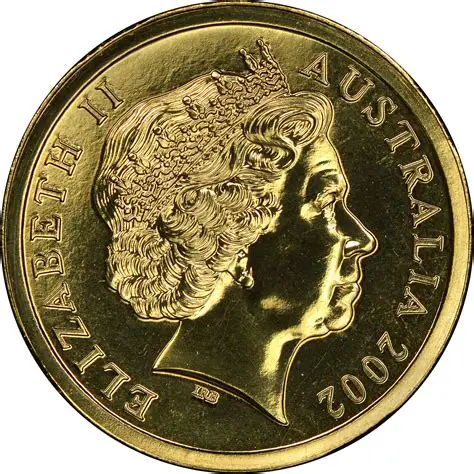Australian Dollar Falls as US Dollar Gains Before Central ISM Manufacturing PMI
Australian Dollar dropped against the US Dollar on Tuesday, ending its recent winning streak as the Greenback drew comfort before the release of the US ISM Manufacturing PMI. In spite of more robust Australian July inflation, which cut the prospect of imminent Reserve Bank of Australia (RBA) rate cuts, the AUD was pressured by renewed US Dollar demand amid ongoing US inflationary pressures. Market observers now look to important US labor market releases, in conjunction with the Fed’s September policy meeting, where expectations of a 25-basis-point rate cut remain over 89%, determining near-term AUD/USD direction. KEY LOOKOUTS • More than 89% chance of 25-bps Fed rate cut in September is being priced in by markets, leaving US Dollar action extremely sensitive to data. • Superior July CPI has dampened near-term prospects for RBA rate cut, providing some medium-term support to the Aussie. • Looming ISM Manufacturing PMI, ADP Employment, Nonfarm Payrolls, and wage growth releases will be pivotal in influencing Fed policy direction. • Blended Chinese PMI readings may impact AUD performance, considering Australia’s high trade exposure to China. Australian Dollar declined against the US Dollar with markets becoming apprehensive before the release of the US ISM Manufacturing PMI, with traders eagerly waiting for the influx of US labor market data in order to consider the Federal Reserve’s next step. Although July’s higher inflation tempered near-term Reserve Bank of Australia (RBA) rate cut hopes, the Aussie struggled to sustain gains as renewed US Dollar support was driven by ongoing United States inflationary pressures. In the meantime, market sentiment continues to center on the Fed’s September policy meeting, where the prospect of a 25-basis-point rate cut has risen over 89%, with AUD/USD continuing to trade within a tight but volatile range. Australian Dollar eased against the US Dollar as traders awaited the US ISM Manufacturing PMI and key labor market data. Stronger Australian inflation supported the AUD, but renewed US Dollar strength and Fed policy uncertainty kept the pair under pressure. • The Australian Dollar (AUD) weakened against the US Dollar (USD) after a five-day winning streak. • US Dollar recovered strength prior to ISM Manufacturing PMI release, driven by inflation fears. • Markets now price more than 89% chance of September Fed 25-basis-point rate cut. • Australia’s July CPI increased 2.8% YoY, exceeding expectations and reducing near-term RBA rate cut chances. • Australia’s Building Permits declined 8.2% during July, and Private Sector Credit increased 0.7%, displaying mixed economic indicators. • China’s Caixin Manufacturing PMI rose to 50.5 in August, but the official PMI remained below 50, underlining continued pressure. • Technical perspective indicates AUD/USD trading around 0.6550, resistance at 0.6568 and support around 0.6520–0.6500. The Australian Dollar dropped as the US Dollar consolidated ahead of the US ISM Manufacturing PMI, with market players also looking to future labour market data, including Nonfarm Payrolls and wage growth rates. Higher July inflation in Australia of 2.8% year-on-year has reduced the probability of the Reserve Bank of Australia (RBA) cutting the rate in the short term, providing the Aussie with some fundamental support. Nevertheless, overall market sentiment is still dominated by US Federal Reserve expectations, where investors increasingly view more than an over 89% chance of a 25-basis-point interest rate cut in September. AUD/USD DAILY PRICE CHART SOURCE: TradingView Domestically, the economic signals in Australia were mixed, with building permits falling drastically but private sector credit posting its strongest growth since April. China’s economic data revealed marginal improvement in the Caixin Manufacturing PMI but continued weakness in the official Manufacturing PMI, which signified that headwinds continue to prevail. The fact that China is Australia’s biggest trading partner means that what happens in China continues to be vital for the outlook of the AUD. Meanwhile, political and policy risks in the US, such as discussions over Fed autonomy, remain to influence international market sentiment and direct the AUD/USD pair. TECHNICAL ANALYSIS AUD/USD pair is hovering around 0.6550, holding strong above the rising trendline and the nine-day Exponential Moving Average (EMA), both of which underpin a short-term bullish bias. The duo is confronted with instant resistance at 0.6568, its five-week high of mid-August, with more room on the upside to the nine-month high of 0.6625. On the downside, robust support would be seen around 0.6520–0.6500, coinciding with the nine-day and 50-day EMAs; a fall below this area could change the trend towards the three-month low of 0.6414, pointing to a bearish trend. FORECAST If the AUD/USD pair holds above the 0.6520–0.6500 support range, increasing bullish momentum could see the pair advance higher towards the immediate resistance level of 0.6568. A break above this level would then set the stage for a test of the nine-month high of 0.6625, particularly if US economic data falls short and reinforces bets on a September Fed rate cut. Further support from China’s economy would also add to the Australian Dollar’s upside. Conversely, if the pair cannot hold above its pivotal support levels, bear risks may return, pulling AUD/USD down to 0.6500 and lower to 0.6414, its three-month low. Fresh US Dollar strength, driven by more robust economic reports or a more aggressive Federal Reserve stance, could put downward pressure on the Aussie further. Poorer-than-expected Chinese economic activity could also weigh on Australia’s trade picture, boosting downward pressure on the currency.




